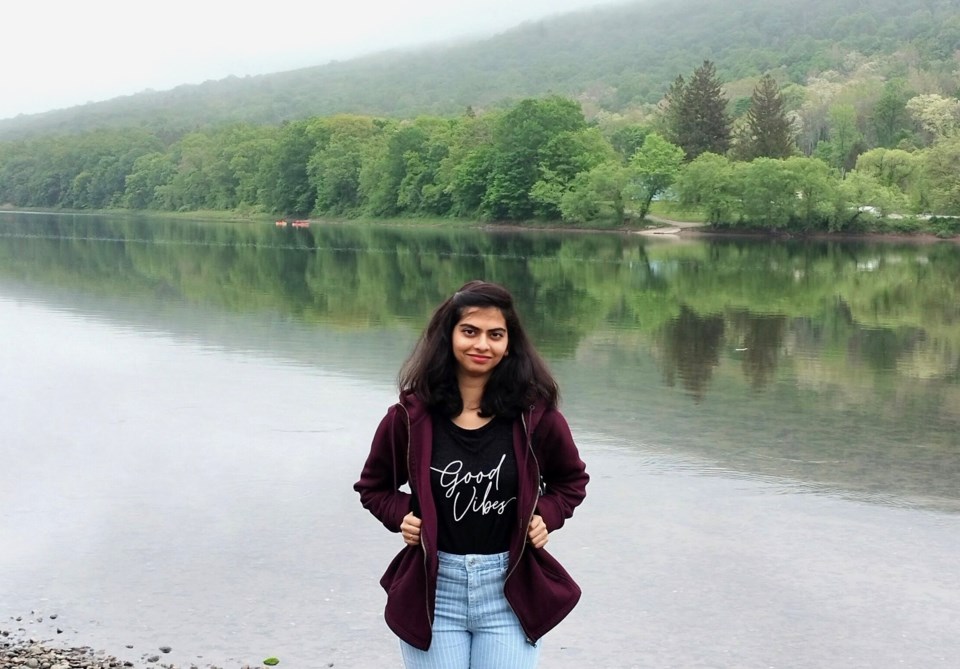By Aabha Anekar, an MPH student at SUNY Downstate
May 11, 2023: the day that the US Federal Government announced the end of the COVID-19 pandemic as a public health emergency. Is it, though? The Black and Hispanic populations of Brooklyn are still struggling to receive basic healthcare. They have been stripped of the insurance coverage they had during the pandemic as it is not a health “emergency” anymore. The pandemic only exposed the existing health disparities, but we are nowhere close to addressing them. How are we going to overcome the long-standing public health emergency that has always been there: the health disparities in people of color?
I immigrated to the United States from India in 6th grade and, unfortunately, have been a victim of racism in school. It is disheartening to see that not a lot has changed two decades later. I continue to witness the shortcomings of the healthcare system, especially in the Black and Hispanic communities. During the Omicron wave, New York City saw increased hospitalization rates amongst the Black and Hispanic populations compared to the white population. They had poor access to outpatient healthcare, which meant that they had to wait till the infection was severe enough to warrant inpatient hospital care1. As a public health professional, I want to promote and be a part of a system that strives to overcome such health gaps. After all, healthcare is a basic human right, not a privilege!
While we can announce the end of a public health emergency, reality would beg to differ. According to the statistics report released by the New York City Department of Health and Mental Hygiene (NYC DOHMH), Blacks have the shortest life expectancy and the highest mortality rate2. The statistics during the pandemic reflected the same: highest mortality rates in the Blacks compared to other ethnicities3. A study conducted by Khullar et al. in 2022 showed that the COVID-infected Black population had higher odds of being diagnosed with diabetes and pulmonary embolism as a long-term sequela, compared to the COVID-infected White population4. We are now, more than ever, in need of a plan to counteract the lingering effects of the pandemic. The way I see it, there are three main challenges we are facing:
- The already compromised pre-pandemic health status of minorities.
- The physical, mental, emotional, and socioeconomic stress that the pandemic worsened.
- The long-term adverse health effects of COVID infection, more in minorities.
The pandemic has uncovered a mess that had been buried under a mask of ignorance and indifference. We shuffled through the pandemic, but it is now time to face the unsettling truth we chose to overlook. First and foremost, we need to act like healthcare is a basic human right, period! Humans have certain necessities such as food, housing and healthcare, which do not require a debate between the Democrats and Republicans. Ensuring basic human rights should be a common goal, irrespective of the political opinion one holds. While I dream of universal healthcare, I hope we can start with the Medicaid Expansion. With the end of the public health emergency, continuous Medicaid enrolment has also been terminated. This means that millions of people who were previously insured will become uninsured5-6. We need an efficient system with a balanced collaboration between the state and federal public health systems to tackle this. The federal public health department needs to set mandated long-term goals for the states to implement Medicaid.
The state public health department needs to consistently assess the unique challenges and create action plans tailored to the state’s population needs by gaining their trust. For example, the state and city governments need to access every individual eligible for Medicaid coverage in person along with brochures and text messages7. We need to set up camps where people can walk in and register for Medicaid. It takes more than a few health policies and a couple of years of education to overcome the oppression that minorities have faced for hundreds of years.
PS: While my writing mainly focuses on racial disparities, I acknowledge that the issue at hand is more complex with the existing intersectional forms of oppression1.
References:
- Racial Inequities in COVID-19 Hospitalizations during the Omicron Wave in NYC. https://www.nyc.gov/assets/doh/downloads/pdf/covid/black-hospitalizations- omicron-wave.pdf
- Summary of vital statistics 2019. NYC Department of Health and Mental Hygiene. https://www1.nyc.gov/assets/doh/downloads/pdf/vs/2019sum.pdf. Accessed July 20, 2023.
- Age-adjusted rates of lab confirmed covid-19 non hospitalized cases ... Accessed July 20, 2023. https://home.nyc.gov/assets/doh/downloads/pdf/imm/covid-19-deaths- race-ethnicity-04242020-1.pdf.
- Khullar, D., Zhang, Y., Zang, C. et al. Racial/Ethnic Disparities in Post-acute Sequelae of SARS-CoV-2 Infection in New York: an EHR-Based Cohort Study from the RECOVER Program. J GEN INTERN MED 38, 1127–1136 (2023). https://doi.org/10.1007/s11606-022-07997-1
- August 2022 ISSUE BRIEF 1 Unwinding the Medicaid Continuous Enrollment Provision: Projected Enrollment Effects and Policy Approaches KEY POINTS. https://aspe.hhs.gov/sites/default/files/documents/404a7572048090ec1259d216f3fd 617e/aspe-end-mcaid-continuous-coverage_IB.pdf
- Tolbert J, Jun 09 MAP, 2023. 10 Things to Know About the Unwinding of the Medicaid Continuous Enrollment Provision. KFF. Published June 9, 2023. Accessed July 7, 2023. https://www.kff.org/medicaid/issue-brief/10-things-to-know-about-the-unwinding-of-the-medicaid-continuous-enrollment- provision/#:~:text=The%20Consolidated%20Appropriations%20Act%2C%202023%20 decoupled%20the%20Medicaid%20continuous%20enrollment
- Unwinding from the COVID-19 Public Health Emergency: A Communications Tool Kit to Keep New Yorkers Covered | NY State of Health. info.nystateofhealth.ny.gov. https://info.nystateofhealth.ny.gov/PHE-tool-kit
Aabha Anekar is a pediatric resident and MPH student at SUNY Downstate in Brooklyn. She wishes to incorporate public health practices into her clinical duties to provide holistic patient care.




